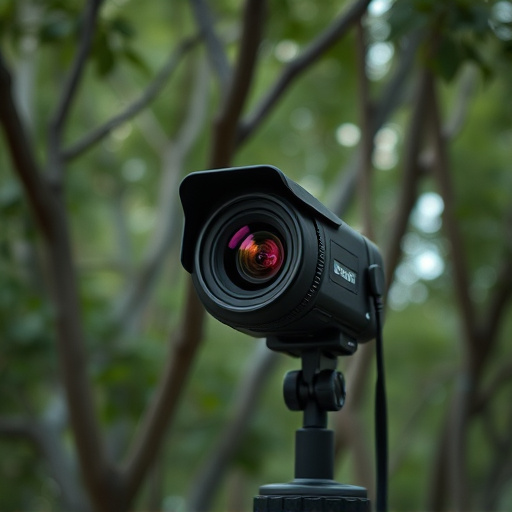Detecting covert surveillance cameras involves a combination of meticulous visual inspection and advanced technology. Look for unusual objects, shadows, or lighting patterns and check walls, ceilings, and fixtures for signs of tampering. Electromagnetic signal detection identifies invisible signals from hidden cameras, while disturbances in WiFi/Bluetooth connections and door/window activity also indicate their presence. Combining these observations with electromagnetic signature analysis provides a robust multi-layered approach to uncover even the most sophisticated hidden cameras, ensuring enhanced privacy protection and security measures against unseen tracking devices.
In the digital age, understanding hidden surveillance devices is crucial. This article guides you through the process of detecting electromagnetic signals and identifying signs of covert cameras. We’ll explore visual cues, from unusual wiring to infrared emitters, that might indicate their presence. Additionally, we delve into advanced techniques employing electromagnetic field detectors and thermal imaging for comprehensive coverage. By mastering these tips, you’ll be better equipped to recognize and combat the subtle art of covert surveillance.
- Understanding Electromagnetic Signals and Their Role in Detection
- Visual Clues: What to Look for in Identifying Covert Cameras
- Advanced Techniques for Uncovering Hidden Surveillance Devices
Understanding Electromagnetic Signals and Their Role in Detection
Electromagnetic signals play a pivotal role in detecting surveillance devices, especially covert cameras that operate discreetly. These signals are electromagnetic radiations emitted by electronic devices, including surveillance equipment. By understanding the unique patterns and characteristics of these signals, experts can uncover hidden cameras and other tracking devices.
When a surveillance camera captures an image or video, it generates an electromagnetic signal during its operation. This signal can be detected using specialized equipment designed to pick up on subtle electromagnetic disturbances. Certain types of covert cameras may emit specific signals that differ from typical electronic interference, making them detectable through advanced analysis techniques. Identifying these subtle signs is crucial for privacy protection and ensuring security against unseen surveillance.
Visual Clues: What to Look for in Identifying Covert Cameras
When it comes to identifying covert surveillance cameras, visual clues are often the first line of defense. Train your eye to spot unusual objects or discrepancies that might indicate the presence of a hidden camera. Look for small, compact devices mounted in seemingly random places—behind picture frames, inside clocks, or attached to light fixtures. Shadows or reflections on windows or glass surfaces can also reveal the presence of an unseen camera.
Pay attention to lighting and angles. A covert camera may be strategically positioned to capture specific areas without being noticed. Uneven lighting patterns or unusual shadows cast by objects can serve as visual hints. Additionally, keep an eye out for signs of tampering with walls, ceilings, or other fixtures—small holes, scratches, or markings that might suggest the installation of hidden equipment.
Advanced Techniques for Uncovering Hidden Surveillance Devices
In the quest to uncover hidden surveillance devices, advanced techniques have emerged as powerful tools. One of the most effective methods involves electromagnetic signal detection. These devices are designed to pick up on invisible signals emitted by covert cameras, providing crucial clues for their location. By analyzing electromagnetic signatures, experts can identify unusual energy patterns indicative of hidden cameras or tracking devices.
Additional signs of covert surveillance cameras include visual anomalies like faint reflections or shadow distortions, subtle disturbances in WiFi or Bluetooth connections, and unexpected activity near windows or doors. Combining these observations with advanced detection technologies creates a multi-layered approach, ensuring that even the most sophisticated hidden cameras are not overlooked.
In the pursuit of privacy and security, understanding how to detect covert surveillance cameras is an essential skill. By grasping the concept of electromagnetic signals and utilizing advanced techniques discussed in this article, individuals can become more vigilant and identify potential signs of hidden cameras. Staying informed about these tips is crucial for navigating our digital age, ensuring personal safety, and protecting sensitive information from prying eyes. Remember that being proactive and keeping these detection methods in mind can significantly deter unwanted surveillance.
